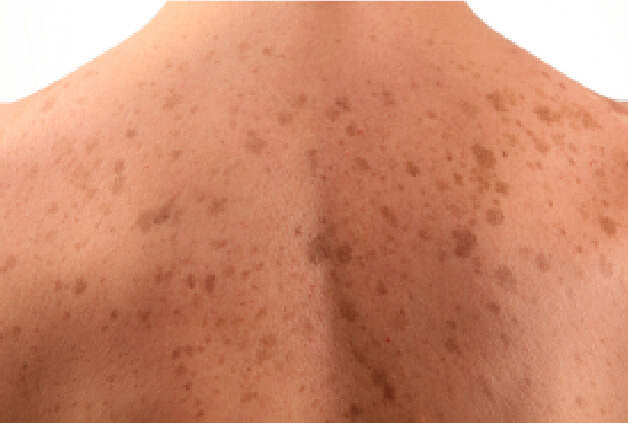Aminolevulinic acid based creams can remove sun spots with minimal pain and may prevent cancer
Source: University of Tampere Nov 12, 2018 7 years, 1 month, 1 week, 2 days, 13 hours, 31 minutes ago
Brown spots on skin caused by sun exposure can be removed using medicated creams, a process that may help prevent future cancers.
Actinic keratoses – also known as sun spots – are brown or pink scaly marks caused by UV rays. In the past, it’s been possible to have sun spots removed by freezing them off with liquid nitrogen, but the pain associated with this procedure meant that only one or two could be taken off at a time.
But a range of creams are now enabling people to remove dozens of sun spots at one time from their faces, forearms or elsewhere, with minimal pain. The most effective of these – a cream based on aminolevulinic acid – can remove 80 per cent of a person’s sun spots in one go, according to a recent study led by Janne Rasanen at the University of Tampere in Finland.
Spotless skin
After aminolevulinic acid is applied to the skin, it is rapidly absorbed by sun spots and reacts to form a chemical called protoporphyrin IX. Patients must keep the cream on for two hours while sitting in sunlight, which triggers protoporphyrin IX to release molecules called reactive oxygen species. These cause the cells in the sun spots to die and ultimately fall off.
The treatment is normally applied once and it works quickly, says Stephen Shumack at the University of Sydney in Australia. “You look like you’ve had a bad sunburn for the first few days, then the skin gets scabby and crusted over and the sun spots peel off within a week,” he says. “The skin looks a lot better afterwards – it becomes very smooth,” says Shumack.
Räsänen’s study compared the effectiveness of two different sun spot creams when used by 69 older adults, who had an average of 11 sun spots each, although some had as many as 32. The cream that contained aminolevulinic acid was more effective, removing 80 per cent of a person’s actinic keratoses. The majority of the participants said using this cream was almost completely painless.
Spreading trend
Because aminolevulinic acid is expensive, many people choose to use a cheaper alternative called fluorouracil cream, says Shumack. This is also effective for removing sun spots over large areas, but has to be applied daily for about 4 weeks and causes more irritation, he says.
Rob Brazier, a retired farmer in the small rural town of Jandowae in Queensland, Australia, recently tried fluorouracil cream to treat the spots covering his arms, face, ears and chest. “It’s a bit scary at first because you get all these raised sores where the cream is reacting and the itchiness drives you crazy,” he says.
After a few weeks, Brazier noticed his sun spots starting to scrape off when he washed his skin or shaved his face. Five months later, he is pleased with the results. “My skin looks pretty good now.”
The use of such creams seems to be catching on in communities like Brazier’s, where heavy sun exposure is a way of life. “Everyone you speak to knows someone who’s doing it. A lot of people here grew up the same way I did – you’d work out in the sun ploughing all day with no shirt on and often no hat, and you wouldn&rsq
uo;t think anything of it.”
In recent trials, sun spot creams have also shown promise for removing the two most common types of skin cancers – basal cell carcinomas and squamous cell carcinomas – as long as they are small and close to the surface. However, there are no creams that can remove melanomas – the most deadly
type of skin cancer. “These need to be taken out surgically,” says Shumack.
Reference: British Journal of Dermatology, DOI: 10.1111/bjd.17311
